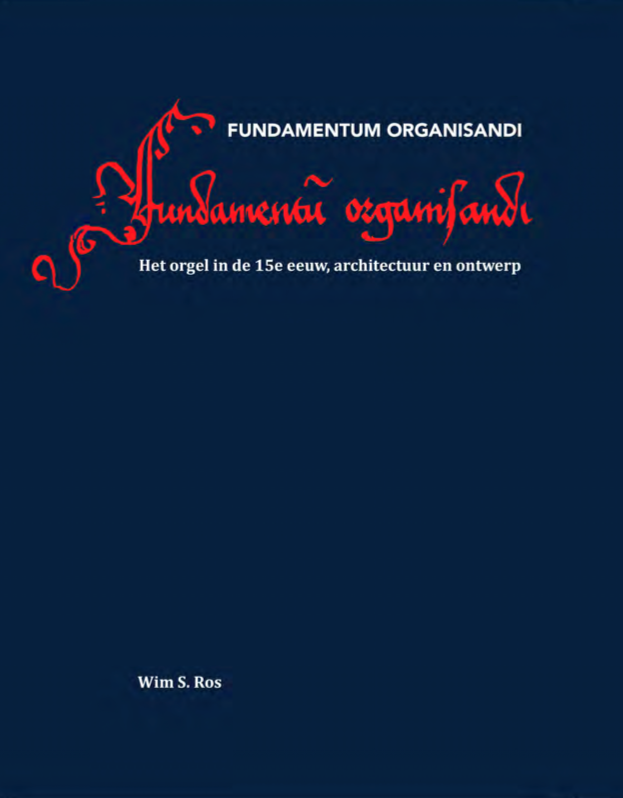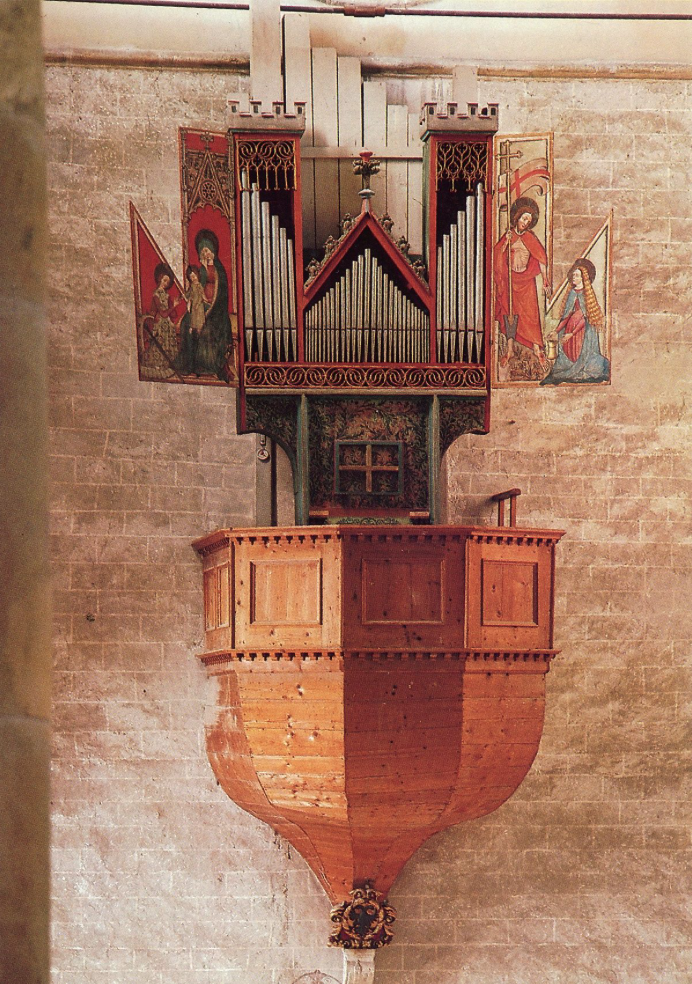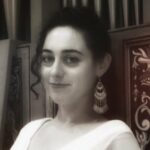Doctoral Thesis: 15th Century Organ Design

Wim S. Ros has recently written the doctoral thesis: Fundamentum organisandi. The organ in the 15th century, architecture and design (2019). The original title Fundamentum organisandi. Het orgel in de 15e eeuw, architectuur en ontwerp and its contents are in Dutch language. Ros conducted his research in the Amsterdam School of Historical Studies (ASH) at the Faculty of Humanities under the supervision of Lex Bosman and Hans Fidom.
The dissertation focuses on the placement of organs inside the church highlighting the importance of proportions and design of the instrument in harmony with its architecture. For the research both physical remnants of organs and iconographical evidence have been studied. Ros offers study-cases of four organs: Valère (Sion), Nicolaikerk (Utrecht), St. Siffrein (Carpentras) and Hervormde Kerk (Krewerd). In addition, there is an annexed catalogue with further evidence of organs up to 1530 with their description, image and bibliography.
Ros presents the similarities in the way different organs from all Europe are designed and settled into the religious space. He also shows how this created a precedent which has become a model in organ building to the present day.
This work will be of help for those willing to obtain an overview of organ building and the integration of the instrument in the church in the 15th century. At the same time it will offer a better understanding of the significance and employment of measurements and geometry at that time.

Abstract (Dutch)
In het proefschrift worden de codes blootgelegd die aan het ontwerp van op een vaste plaats in de kerk aangebrachte orgels en orgelensembles tot ca. 1530 ten grondslag lagen – met speciale aandacht voor de relatie tussen het orgelensemble en het interieur van de kerk. Aan het ontwerp lagen getalsmatige, metrische en geometrische patronen en modellen ten grondslag. De relatie van het orgelensemble met het interieur was gebaseerd op adjunctie, wederzijdse toevoeging met behoud van beider zelfstandigheid. De resultaten van het onderzoek bieden nieuwe inzichten in het orgelontwerp op de schaal van de meso-architectuur, maar eveneens in het architectonisch ontwerp op de schaal van de macro-architectuur. Centraal stond de voor de 15e eeuw gangbare ontwerpmethodiek, die hier voor het eerst als een op alle beschikbare bronnen berustend samenhangend systeem gepresenteerd wordt. Intensieve opmeting en documentatie van de orgels en orgelensembles leidde tot informatie over het oorspronkelijke ontwerp, de daaraan ten grondslag liggende uitgangspunten en de uiteindelijke vertaling daarvan naar het gerealiseerde object. Het orgelontwerp is exemplarisch onderzocht aan de hand van vier representatieve (in tijd en plaats uiteenlopende) kerken en orgelensembles – te weten Sion, Utrecht Nicolaïkerk, Carpentras en Krewerd. Aan de hand van de resultaten kon de ontwikkeling van de verschillende ontwerpen gereconstrueerd worden. Dit maakte vergelijking met andere orgels en orgelensembles mogelijk. De breedte van het onderwerp blijkt uit de bestandscatalogus die een zo compleet mogelijk overzicht biedt van bewaard gebleven orgels en orgelensembles, fragmenten, orgelluiken en originele ontwerptekeningen, alsmede van vele verdwenen orgels en orgelensembles waarvan slechts afbeeldingen overgeleverd zijn.
English translation of the conclusions and summary available here.
